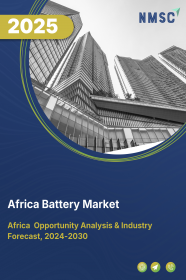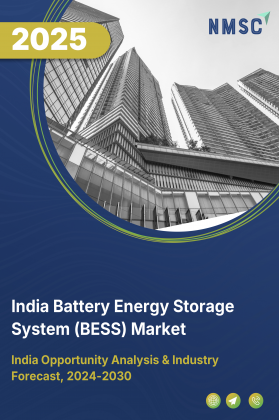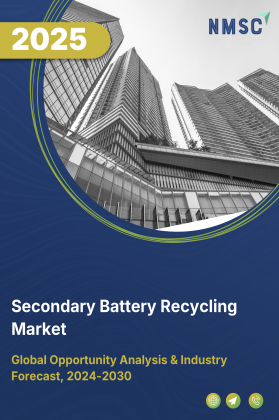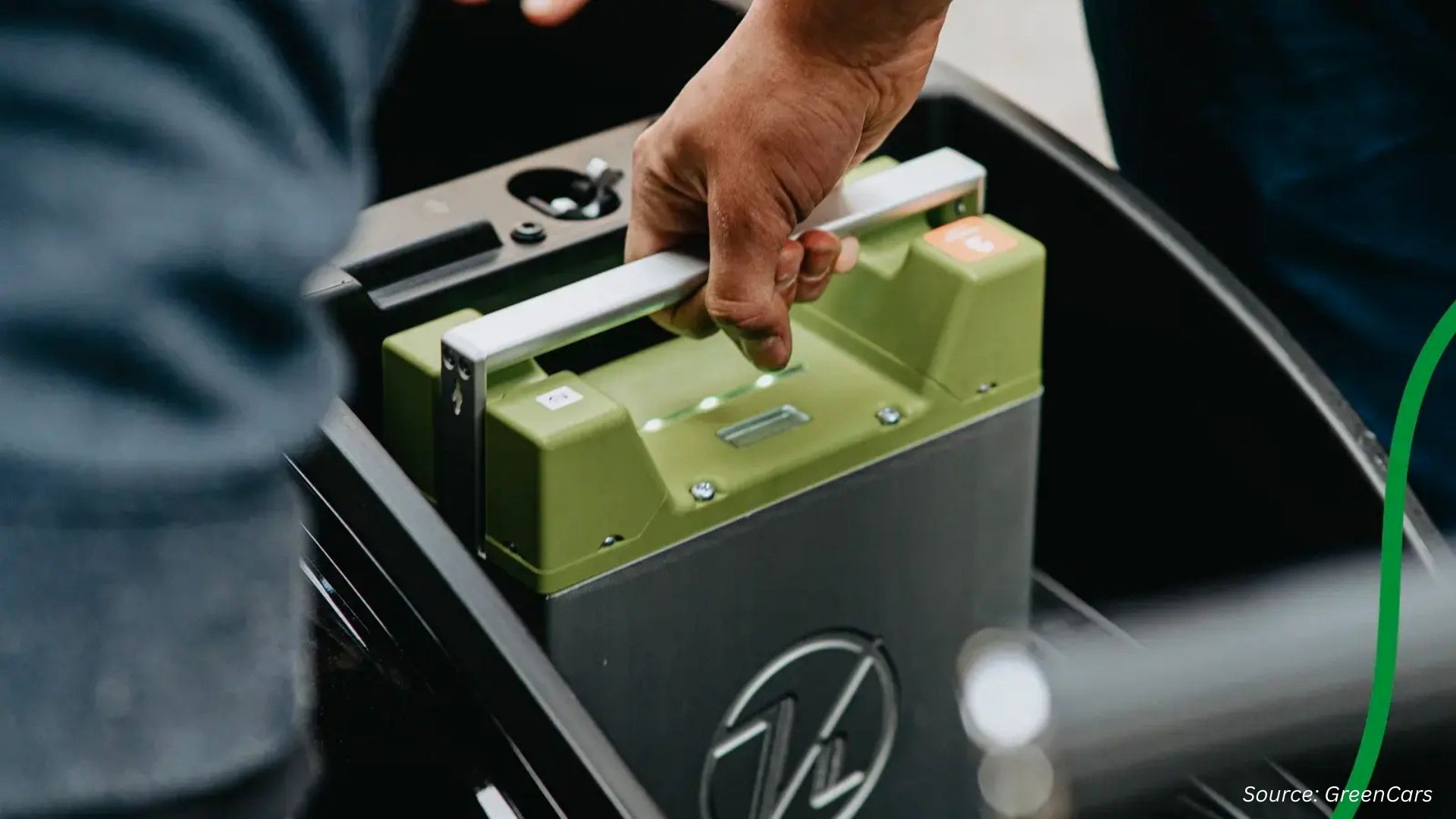
Africa Battery Market by Type (Stationary, and Motive), by Battery Type (Primary Batteries,Secondary Batteries and Others), by Voltage Type (Low Voltage Batteries, Medium Voltage Batteries and Others), By Power Capacity (Low Capacity Batteries, Medium Capacity Batteries and Others), By Self-Discharge Rate (Low Self-Discharge Rate Batteries, Medium Self-Discharge Rate Batteries and Others), by Application (Residential and others) – Global Opportunity Analysis and Industry Forecast 2023-2030.
Industry: Energy & Power | Publish Date: 04-Nov-2025 | No of Pages: 268 | No. of Tables: 284 | No. of Figures: 209 | Format: PDF | Report Code : EP718
Market Definition
Africa Battery Market was valued at USD 1.01 billion in 2022, and is predicted to reach USD 4.35 billion by 2030, with a CAGR of 19.9% from 2023 to 2030. A battery operates as a mechanism that stores energy and later releases it by transforming chemical energy into electrical energy. Typically, batteries produce electricity by harnessing one or more electrochemical cells.
Batteries can be categorized into two distinct types are primary batteries and secondary batteries. Primary batteries, also known as non-rechargeable batteries, offer a straightforward and convenient energy supply for various portable electronic and electrical devices, including cameras, watches, toys, lights, radios, and more. In contrast, secondary batteries, often referred to as rechargeable batteries, possess the capability to be recharged electrically once they've been depleted. These energy storage solutions have evolved into indispensable sources of power in our daily routines.
The progress of cutting-edge technologies, encompassing smartphones, tablets, laptops, solar energy systems, and electric vehicles (EVs), has ushered in the era of robust batteries capable of prolonged endurance and providing essential energy requirements.
Off-grid Solar Projects Fuel Demand for Energy Storage
Africa is emerging as a significant hub for off-grid solar initiatives, driving the demand for integrated energy storage solutions. Countries like South Africa are leading the way with substantial investments in Battery Energy Storage Systems (BESS). For instance, the Renewable Energy Independent Power Producer Procurement Programme (REIPPPP) has been instrumental in advancing energy storage projects, including the development of 360 MW storage systems across various Eskom distribution sites. These initiatives aim to enhance grid stability and support the integration of renewable energy sources, thereby propelling the growth of the battery market in the region.
Declining Lithium-ion Battery Prices and Enhanced Performance
The significant reduction in lithium-ion battery prices has been a pivotal factor in the expansion of the battery market in Africa. Technological advancements have led to faster recharge times, higher energy density, and improved discharge capabilities, aligning with the operational requirements of Electric Vehicles (EVs). For example, the establishment of the uYilo Jumpstart Fund in South Africa, with an investment of USD 55,000, underscores the government's commitment to fostering innovation in the EV sector. These developments are expected to stimulate further growth in the battery market by making energy storage solutions more accessible and cost-effective.
Battery Safety and Environmental Concerns as Market Restraints
Improper management and disposal of used batteries in Africa pose significant risks to human health and the environment, acting as a major restraint on the battery market’s growth. Incorrect disposal often leads to accumulation in landfills where batteries degrade, releasing toxic substances such as lead, mercury, cadmium, and lithium into soil and water sources, damaging ecosystems and contaminating drinking water. Informal recycling practices exacerbate these issues, contributing to pollution and health hazards, particularly in vulnerable communities. Without stronger regulations, proper recycling infrastructure, and public awareness, these safety and environmental concerns could slow market expansion by increasing costs, reducing investor confidence, and raising public resistance to battery technologies.
Potential Future Opportunities With Nuclear Diamond Batteries (NDBs) in Africa
Although still in the early stages of development, Nuclear Diamond Batteries (NDBs) hold long-term potential to transform energy storage in Africa. By harnessing energy from the radioactive decay of recycled nuclear waste, NDBs promise ultra-long-lasting, compact, and maintenance-free power solutions. Once commercialized, such technology could support remote infrastructure, off-grid communities, and mission-critical applications across sectors like telecommunications, defense, and healthcare. Africa's growing energy needs and innovation-driven outlook make it a promising region for the future adoption of such advanced battery technologies.
Competitive Landscape
The Africa battery industry includes several market players such as Associated Battery Manufacturers (EA) Ltd. (ABM), BlueNova Energy (Pty) Ltd, Clarios, Deltron Energy, Dixon Batteries, Duracell Inc, EnerSys, Enertec Batteries (Pty) Ltd, Eveready (Pty) Ltd, Exide Technologies, First National Battery, Freedom Won, GS Yuasa Corporation, Hoppecke (via Kopana Power), Leoch International Technology Ltd, Panasonic Corporation, Potensa, Solar MD, Trojan Battery Company (via BatteryDC), VARTA (via AutoX).
Africa Battery Market Key Segments
By Type
-
Stationary
-
Motive
By Battery Type
-
Primary Batteries (Non-rechargeable)
-
Alkaline Batteries
-
Zinc-Carbon Batteries
-
Lithium-Thionyl Chloride Batteries
-
-
Secondary Batteries (Rechargeable)
-
Lead-Acid Batteries
-
Nickel-Cadmium (NiCd) Batteries
-
Nickel-Metal Hydride (NiMH) Batteries
-
Lithium-ion Batteries
-
Lithium Nickel Manganese Cobalt (LI-NMC)
-
Lithium Iron Phosphate (LFP)
-
Lithium Cobalt Oxide (LCO)
-
Lithium Titanate Oxide (LTO)
-
Lithium Manganese Oxide (LMO)
-
Lithium Nickel Cobalt Aluminum Oxide (NCA)
-
-
Other Secondary Batteries
-
By Voltage Type
-
Low Voltage Batteries (1V - 12V)
-
Medium Voltage Batteries (24V - 100V)
-
High Voltage Batteries (200V - 1000V)
By Power Capacity
-
Low Capacity Batteries (Up to 1,000 mAh)
-
Medium Capacity Batteries (1,000 mAh to 10,000 mAh)
-
High Capacity Batteries (10,000 mAh to 100,000 mAh)
-
Ultra High Capacity Batteries (More than 100,000 mAh)
By Self-Discharge Rate
-
Low Self-Discharge Rate Batteries
-
Medium Self-Discharge Rate Batteries
-
High Self-Discharge Rate Batteries
By Application
-
Residential
-
Industrial
-
Automotive
-
ICE Engines
-
Passenger vehicles
-
Commercial vehicles
-
-
Electric vehicles
-
E-Bikes
-
E-Cars
-
E-Buses
-
E-Trucks
-
-
-
Medical
-
Telecom & IT
-
Consumer Electronics
-
Power & Utility
-
Aerospace & Defense
-
Marine
-
Other Industries
-
Commercial
By Region
-
Africa
-
South Africa
-
Nigeria
-
Kenya
-
Egypt
-
Morocco
-
Ghana
-
Other Countries
-
Key Players
-
Associated Battery Manufacturers (EA) Ltd. (ABM)
-
BlueNova Energy (Pty) Ltd.
-
Clarios
-
Deltron Energy
-
Dixon Batteries
-
Duracell Inc.
-
EnerSys
-
Enertec Batteries (Pty) Ltd.
-
Eveready (Pty) Ltd.
-
Exide Technologies
-
First National Battery
-
Freedom Won
-
GS Yuasa Corporation
-
Hoppecke (via Kopana Power)
-
Leoch International Technology Ltd.
-
Panasonic Corporation
-
Potensa
-
Solar MD
-
Trojan Battery Company (via BatteryDC)
-
VARTA (via AutoX)
Report Scope and Segmentation
|
Parameters |
Details |
|
Market Size in 2022 |
USD 1.01 billion |
|
Revenue Forecast in 2030 |
USD 4.35 billion |
|
Growth Rate |
CAGR of 19.9% from 2023 to 2030 |
|
Analysis Period |
2022–2030 |
|
Base Year Considered |
2022 |
|
Forecast Period |
2023–2030 |
|
Market Size Estimation |
Billion (USD) |
|
Growth Factors |
|
|
Companies Profiled |
20 |
|
Market Share |
Available for 10 companies |
|
Customization Scope |
Free customization (equivalent up to 80 working hours of analysts) after purchase. Addition or alteration to country, regional, and segment scope. |
|
Pricing and Purchase Options |
Avail customized purchase options to meet your exact research needs. |

















 Speak to Our Analyst
Speak to Our Analyst

























